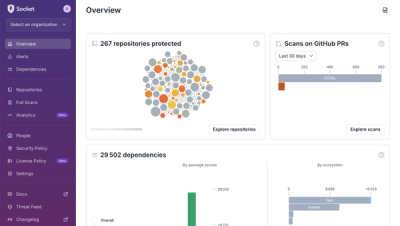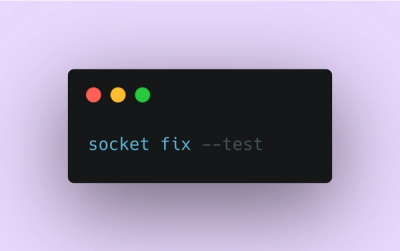
Research
Using Trusted Protocols Against You: Gmail as a C2 Mechanism
Socket uncovers malicious packages on PyPI using Gmail's SMTP protocol for command and control (C2) to exfiltrate data and execute commands.
twitch-drops-watcher
Advanced tools
Script to periodically scan for Twitch Drops for a given game.
Node.js CLI tool to scan for Twitch streams with Drops enabled for a given list of games.
Usage: twitch-drops-watcher [options] <games...>
CLI tool to check for Twitch live streams with Drops Enabled for a given list of games.
Options:
-V, --version output the version number
-d, --drops only show live streams with Twitch Drops enabled. (default: false)
-e, --env <path> path to the .env file to load (default: "./.env")
-h, --help display help for command
The exact name of the videogame you want can be found at https://www.twitch.tv/directory.
You can run it as an NPM script with npx twitch-drops-watcher. See below for configuration.
First, clone the repository from Github, then, install the dependencies with Yarn or NPM, and, finally, compile the code.
git clone git@github.com:Haltarys/Twitch-Drops-Watcher.git
yarn install # npm install
yarn run build # npm run build
Don't forget to add the environment variables to configure the script (see below.)
After installing the dependencies and compiling the code, you can run it with: node dist/index.js or simply node ..
For the script to work, it needs some environment variables to be set (see .env.example for details.)
You can either export them directly into your environment like so:
export TWITCH_CLIENT_ID=<Your Twitch client ID>
# ... Do so for all necessary environment variables
node . "Game1" "Game2" # run the script
# Or in one line
TWITCH_CLIENT_ID=<Your Twitch client ID> ... node . "Game1" "Game2"
Or use an .env file like as detailed below (recommended.)
Copy the .env.example file and rename it to .env.
Go to https://dev.twitch.tv/console/apps, log into your Twitch account and create a new app. Generate a client ID and secret and save them to the .env file.
Read more at https://dev.twitch.tv/docs/api/get-started.
Go to https://console.cloud.google.com/apis/dashboard, log into your Google account and create a new Cloud project. From that project, create credentials and paste them into the .env file.
Specify the .env file's path with the -e, --env flag (default is ./.env.)
Useful links:
FAQs
Script to periodically scan for Twitch Drops for a given game.
The npm package twitch-drops-watcher receives a total of 2 weekly downloads. As such, twitch-drops-watcher popularity was classified as not popular.
We found that twitch-drops-watcher demonstrated a not healthy version release cadence and project activity because the last version was released a year ago. It has 1 open source maintainer collaborating on the project.
Did you know?

Socket for GitHub automatically highlights issues in each pull request and monitors the health of all your open source dependencies. Discover the contents of your packages and block harmful activity before you install or update your dependencies.

Research
Socket uncovers malicious packages on PyPI using Gmail's SMTP protocol for command and control (C2) to exfiltrate data and execute commands.

Product
We redesigned Socket's first logged-in page to display rich and insightful visualizations about your repositories protected against supply chain threats.

Product
Automatically fix and test dependency updates with socket fix—a new CLI tool that turns CVE alerts into safe, automated upgrades.